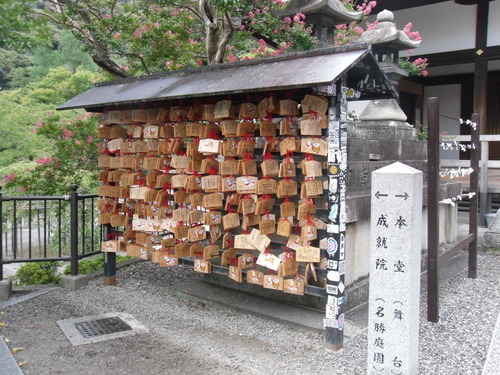Lately I’ve been adjusting to a new rhythm as Japan has forced me into a completely new lifestyle. At home, like many American college students, I drive or take the (somewhat inconvenient) bus everywhere. Walking all the way across campus at Valpo seems like a long hike, and though I don’t own a bicycle, I don’t think a lot of students ever go very far on their bicycles. I spend many hours a day doing homework around my classes, which occur at the same time throughout the week. I almost never bother cooking since the meal plan is sufficient.
Here my routine is completely different. My classes aren’t usually at the same time and all of my homework for all my classes can be finished in three hours or less. Usually it’s a lot less. Driving isn’t really an option here, so that leaves walking, cycling, and public transportation. Walking is actually a bit inconvenient in Hirakata, at least with the weather still as hot as it’s ever been. Any supermarket, store, restaurant, or train station is usually a twenty minute walk or more. So instead of paying bus fares, I bike all over town. I’m pretty sure I’ve never biked this much in my life. Going up the plentiful (and often fairly steep, compared to my home terrain of plains as far as the eye can see) hills was definitely hard on my legs the first week or so, but I’m getting used to it now.
I take the trains EVERYWHERE, and they’re incredibly convenient. Back near Chicago, if you miss your train, you could end up waiting thirty to sixty minutes for the next one. Here, you’ll wait a maximum of ten minutes, and the trains are always on time. My speaking partner, Mizuho, and I were talking about trains once and she mentioned how people here start getting irritated if trains are one, two, or three minutes late. She was rather surprised when I mentioned how people near chicago expect the trains to be running at least ten minutes late. Often more. Once I get off the train in the city, it’s all walking from there. It’s exhausting, but it’s nice to be able to go slowly through the city and actually notice the little things instead of driving right past.
Moreover, my diet is completely different. A lot of the easily accessible junk food back home isn’t available here, and if they have Japanese equivalents, they’re hard to find. Even grocery shopping is different. It’s actually more of an adventure now; I can’t read a lot of food-specific kanji, so mostly I buy things based on price and looks. The other international students do the same. It’s not uncommon to hear, “That looks good. What is it?” followed by, “I have no idea,” at dinner in the Seminar House. It may not be that I don’t know the words that are printed on things, but speaking and reading Japanese are two completely different things, unlike Spanish, my other foreign language. Spanish is spelled exactly as it sounds, but the complexity of the Japanese language makes shopping quite a bit harder than at home. But honestly, it’s kind of fun sometimes, buying mystery food.
The most striking difference for me is that I’m always on the move and always planning my next outing. Hirakata is conveniently situated very near both Kyoto and Osaka. It’s also not too far from Nara. Shinkansen trips to Tokyo are expensive, but not out of the question. Dinner discussions usually revolve around either trips people have just returned from or the next trip they’re planning. Hirakata itself has a little of the small town feeling, but is also near huge bustling Osaka and the cultural bastion of Kyoto. We’re never short of things to do around here, only the time necessary to do everything!



Leave a Reply